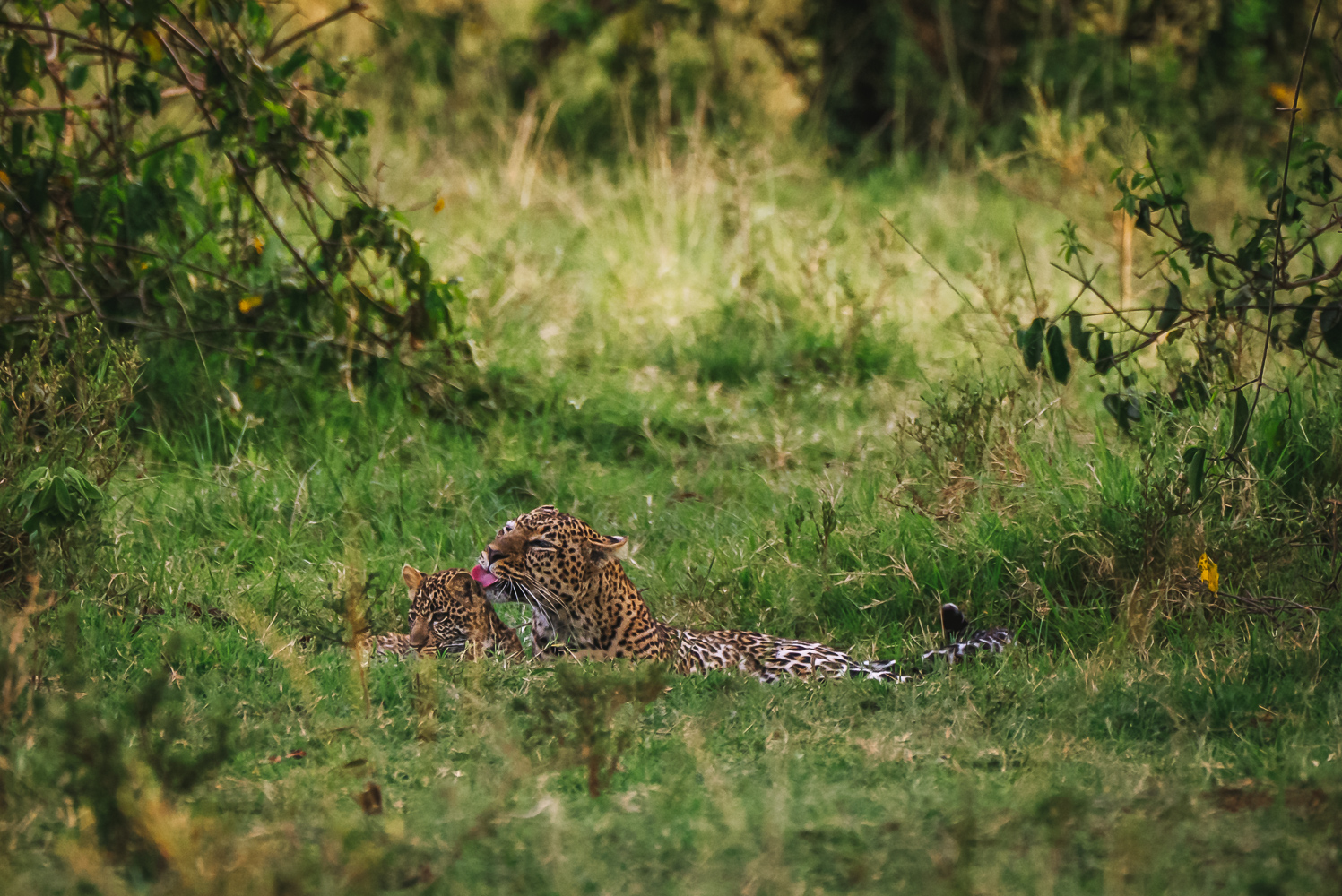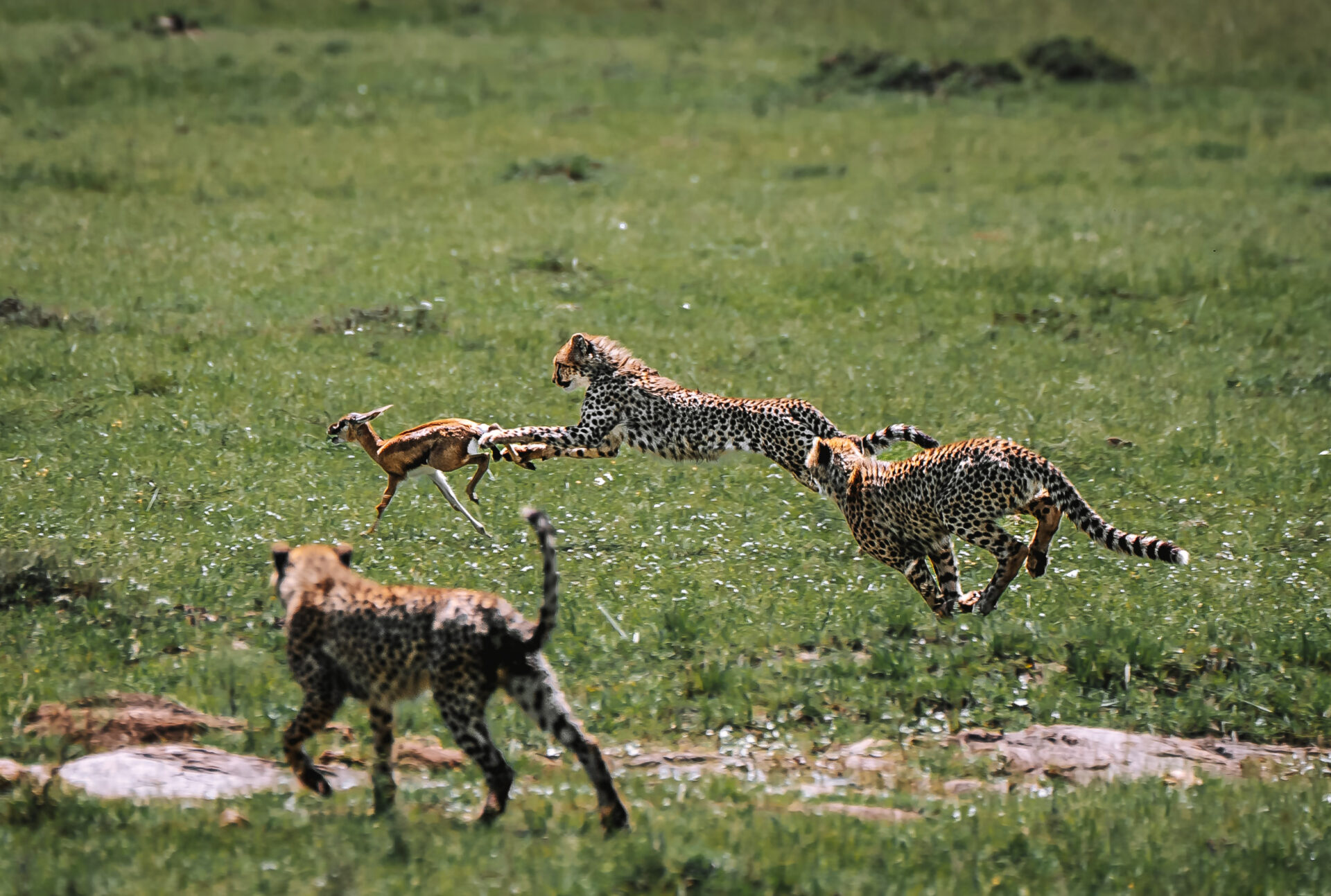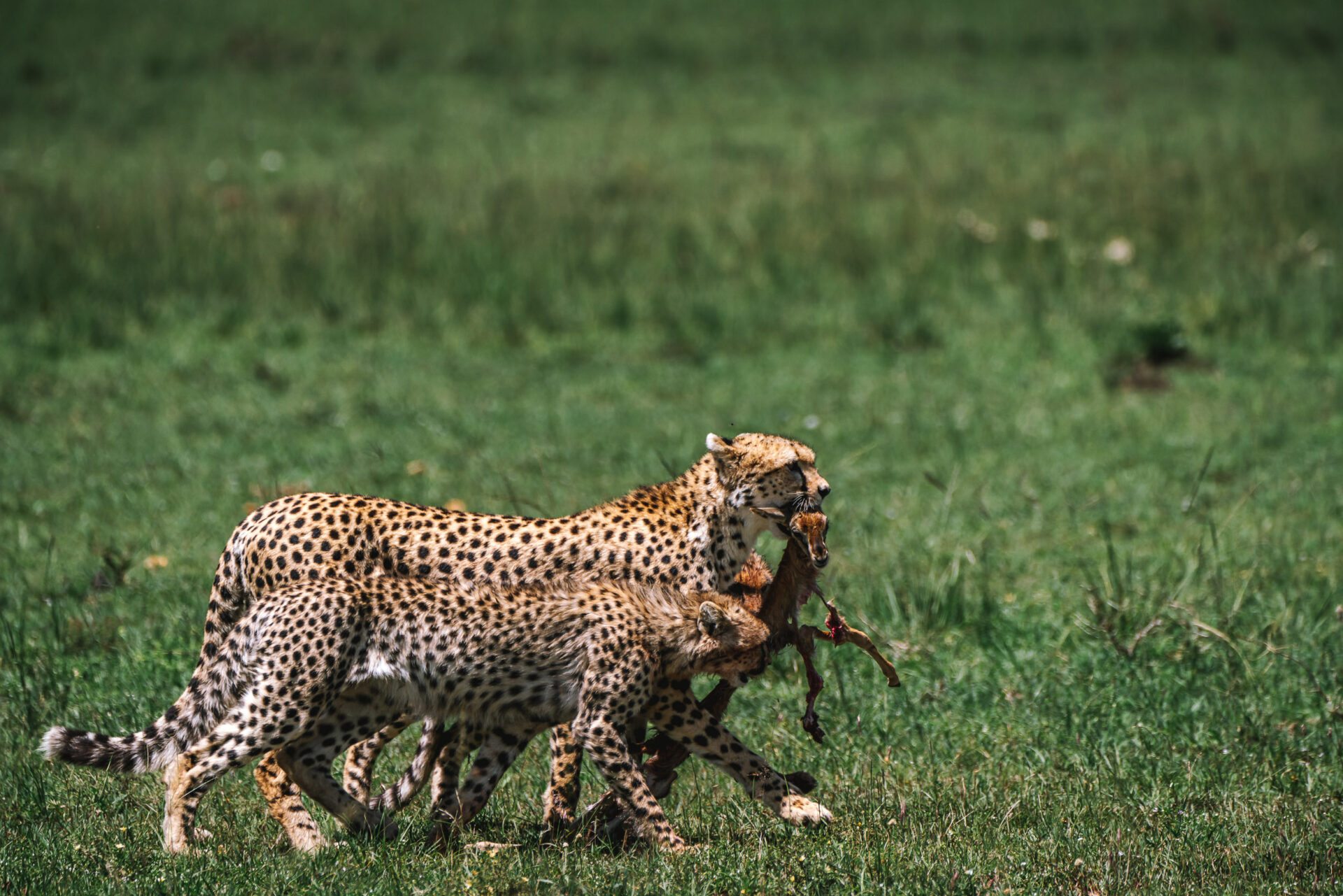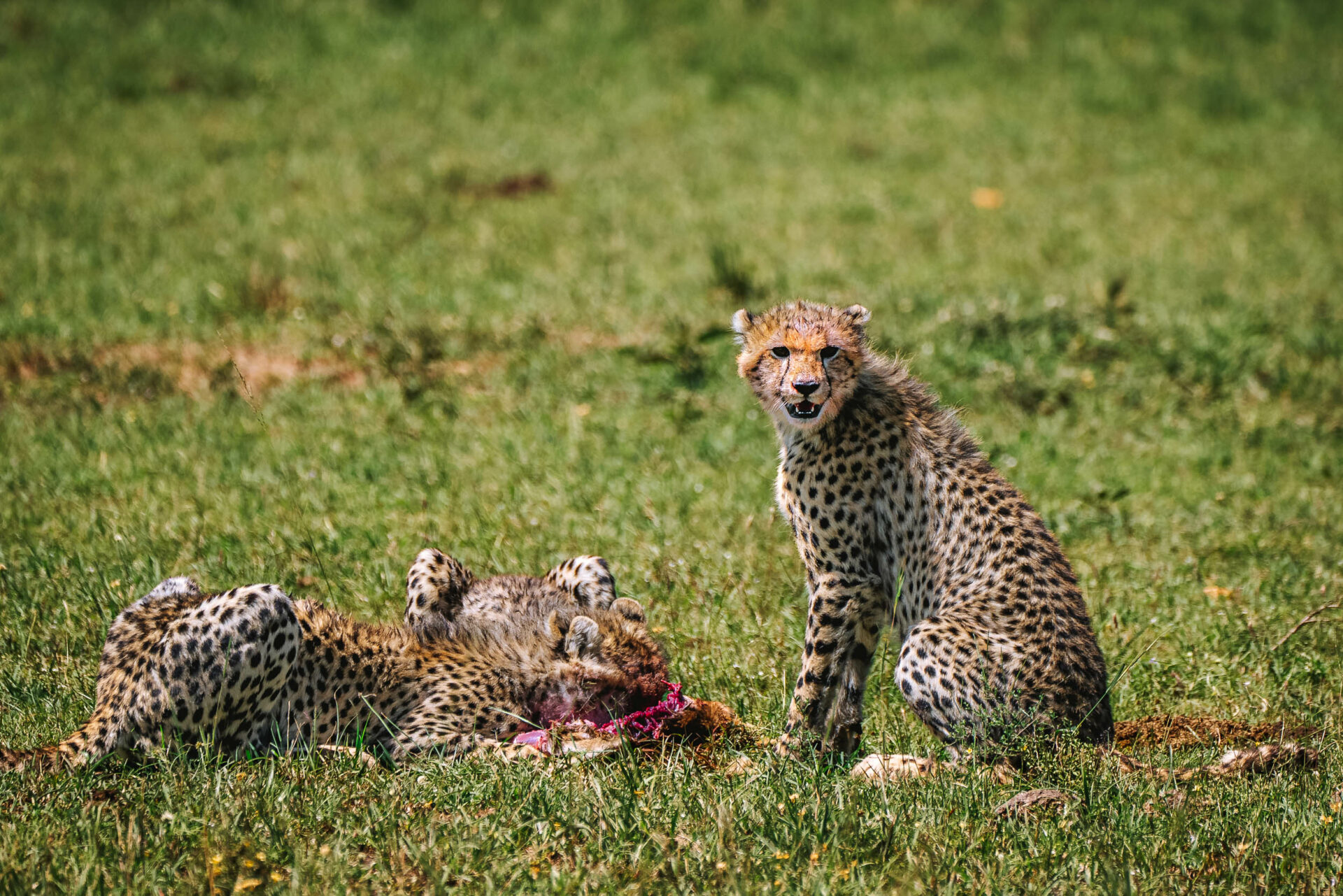Located in East Africa, Kenya is a destination known for its rich wildlife and natural beauty. The country offers an incredible variety of landscapes, from iconic savannahs to dense forests, lakes and rivers.
*This post may contain affiliate links, as a result, we may receive a small commission (at no extra cost to you) on any bookings/purchases you make through the links in this post. As an Amazon Associate, we earn from qualifying purchases. Read our full disclosure
With its wide range of habitats, Kenya is home to some of the most diverse animal populations in the world. From the famous Big Five to many other iconic and endangered mammals, reptiles and birds, there is no shortage of wildlife sightings to be had in Kenya.
Having recently visited Kenya on a safari with Alluring Africa and Governor’s Camps, we had the opportunity to see an incredible number of animals in Kenya firsthand. Our knowledgeable guides taught us a ton about each animal, its behaviour and its unique characteristics.
Fascinated by what we’ve learned and proud of the photos we’ve captured, we wanted to put together this comprehensive guide to some of the most remarkable animals in Kenya. Follow along as we share our favourite photos from our safari in Kenya and insights into what makes each one of these animals so special.

Traveling Soon? Here is a list of our favourite travel providers and accessories to help get you ready for your upcoming trip!
Kenya’s Diverse Terrain and Ecosystems
Kenya’s vibrant landscapes range from snow-capped mountains to tall grassy plains. With stunning coastlines and dense forests, this country showcases incredible diversity in its terrain and habitats and its one of the reasons why an abundance of wildlife thrives in this destination.
The northern part of Kenya features diverse landscapes, including wetlands, mangroves, and freshwater lakes that create an ideal environment for aquatic animals and birds.
Further south, the rolling hills provide excellent grazing grounds for herbivores such as buffaloes, zebras and giraffes. And in the same light, great hunting grounds for their predators, the more dangerous animals in Kenya, like big cats and hyenas.
The lush tropical forests of coastal regions are home to baboons, duiker, elephants and other primates. Kenya’s diversity in terrain also allows for various species to live side-by-side by creating suitable habitats for specific species.
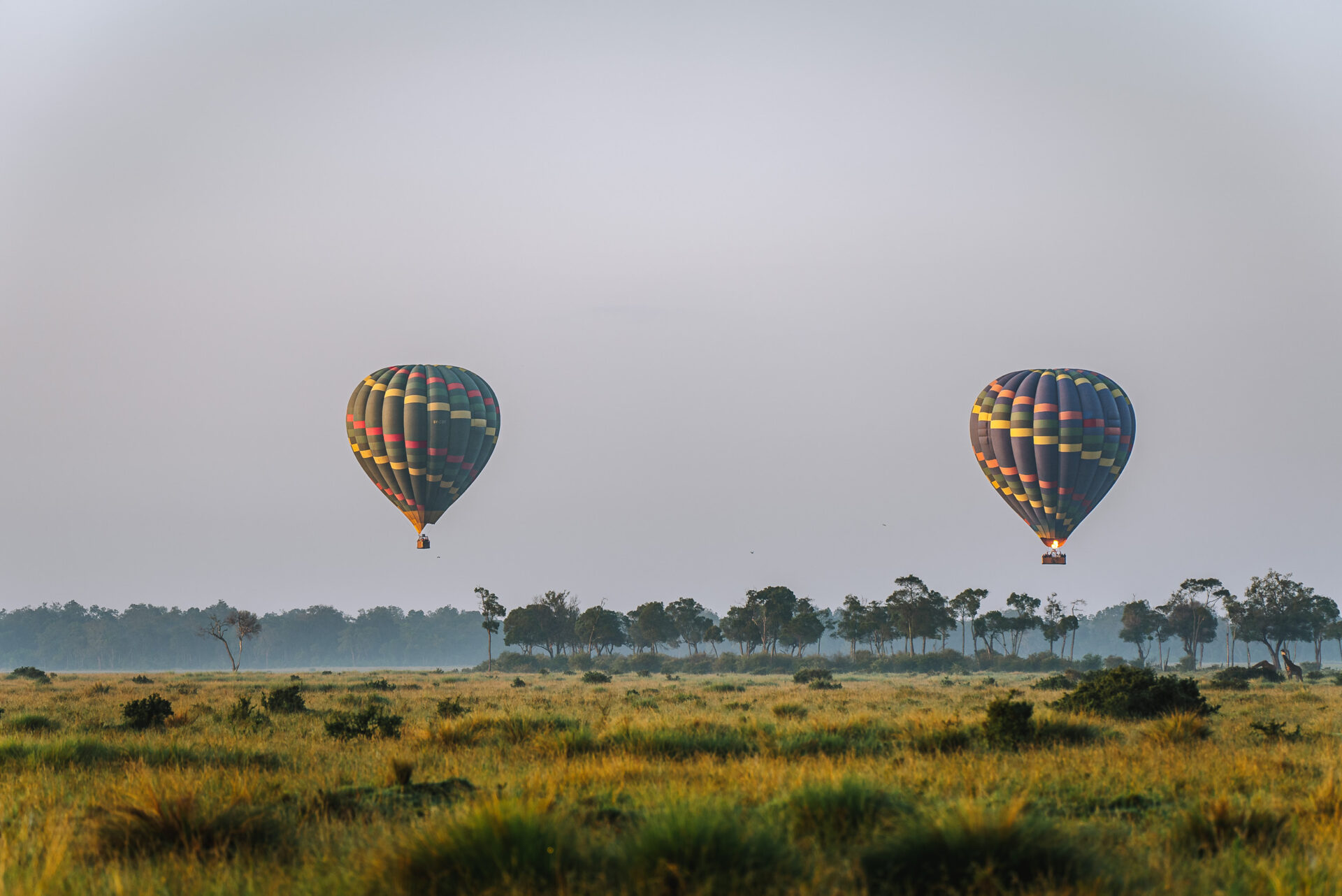
Animals in Kenya: The Big Five
Kenya’s national parks are teeming with wildlife. There is, of course, the famous Big Five, a term coined by African big-game hunters back in the 1900s, to refer to five large, dangerous animals that were on every hunter’s list. The Big Five consists of lion, elephant, leopard, rhino, and Cape buffalo. These were not the most dangerous animals in Kenya and other parts of Africa, but it did signify a certain level of difficulty in killing them.
Wildlife hunting, also known as trophy hunting, was banned in Kenya in 1977. Since then, Kenya has been committed to protecting its wildlife population and preserving its natural resources. Hunting practices have been replaced by eco-tourism, with a large percentage of tourism dollars now going to support conservation efforts and protecting animals in Kenya.
The remnants of the iconic status of the Big Five remained, and today, these animals are still widely recognized for their iconic status in Africa. We can tell you firsthand, that viewing these iconic animals is an unforgettable experience that allows you to appreciate their beauty and oftentimes humbling power.
A visit to Kenya wouldn’t be complete without coming up close and personal with the Big Five! Let’s talk a bit more about each one of the Big Five animals in Kenya.
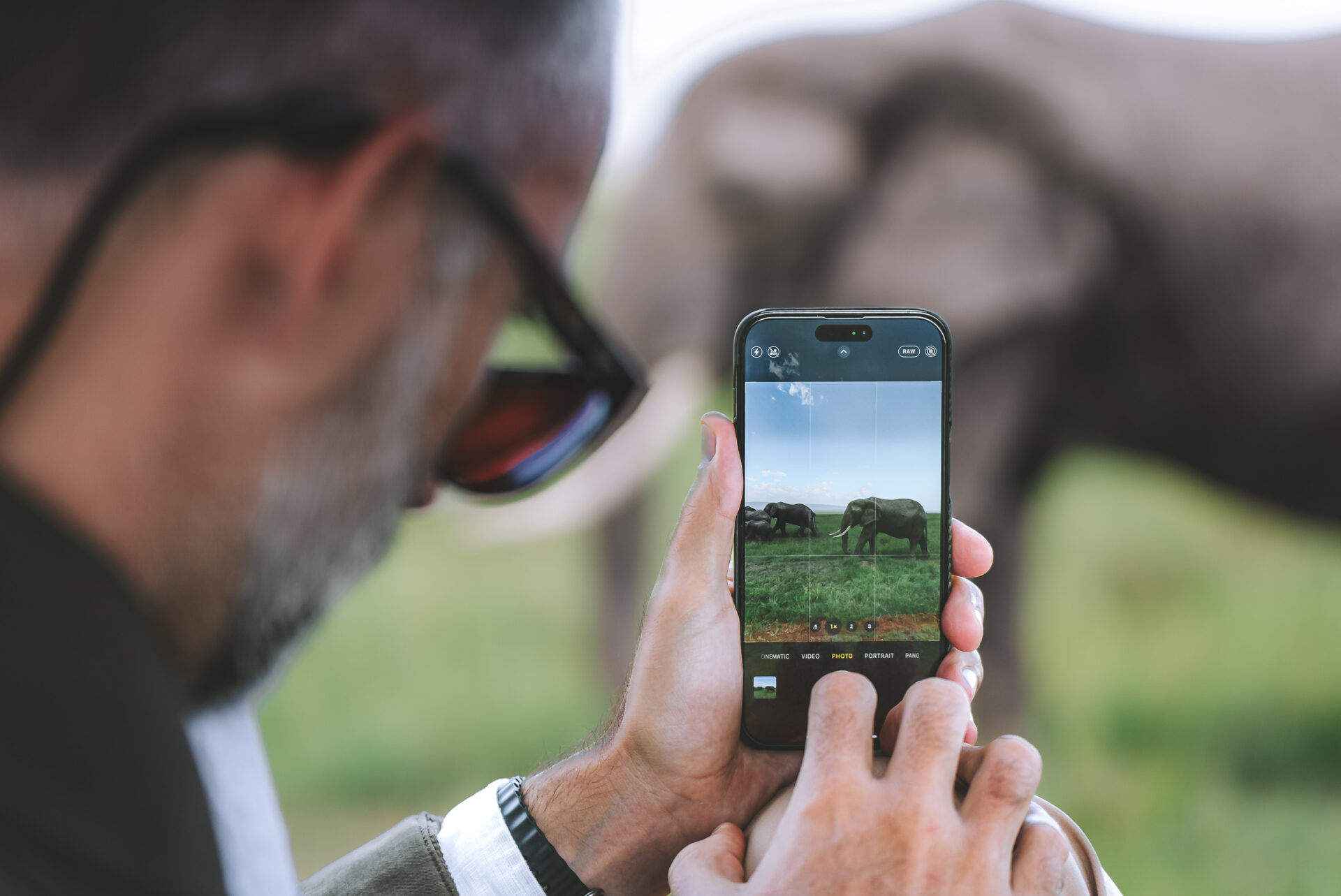
1. African Elephants
With over 30,000 African elephants found in Kenya, it is fair to say that these gentle giants are abundant in this part of Africa. According to Kenya Wildlife Service (KWS), over the last 3 decades, the population of elephants in Kenya has more than doubled, going from just 6,000 elephants in Kenya in 1989, to 34,800 by the end of 2019.
While elephants are found in many National Parks in Kenya, the highest concentration of elephants is in Amboseli National Park, where they are frequently seen roaming in large herds. Other areas with significant elephant populations include Tsavo National Park, Laikipia, and, of course, the Maasai Mara National Reserve.
We always enjoy watching elephants on safari. They often travel in big matriarch-dominated herds consisting of elephants of different ages. They are giant but truly gentle, often approaching the cars very close while grazing peacefully on the vast grasslands.
If you come on a Kenya safari during the calving season, you may be lucky to spot adorable young elephants learning their way or huddling close to their mothers.
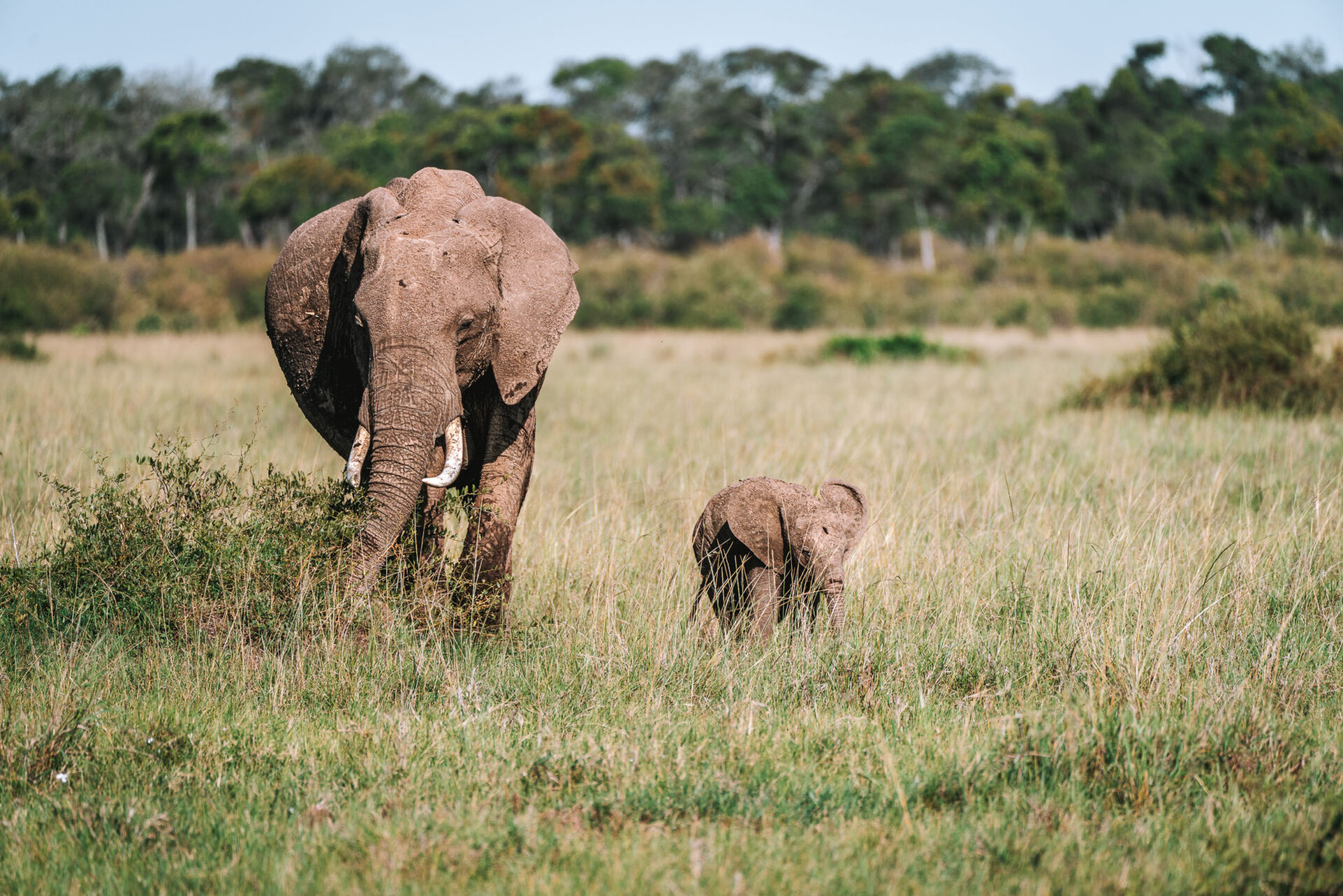
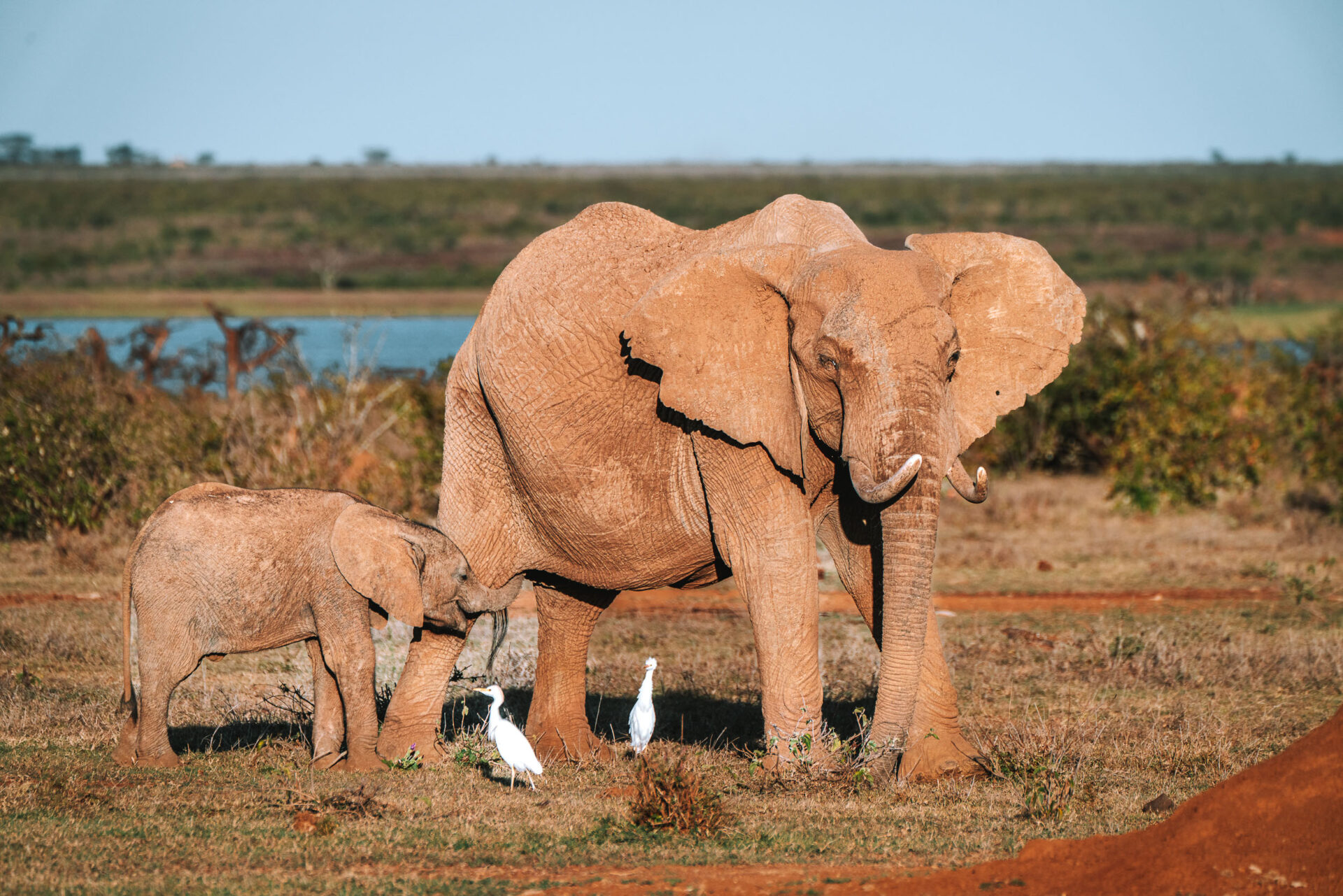
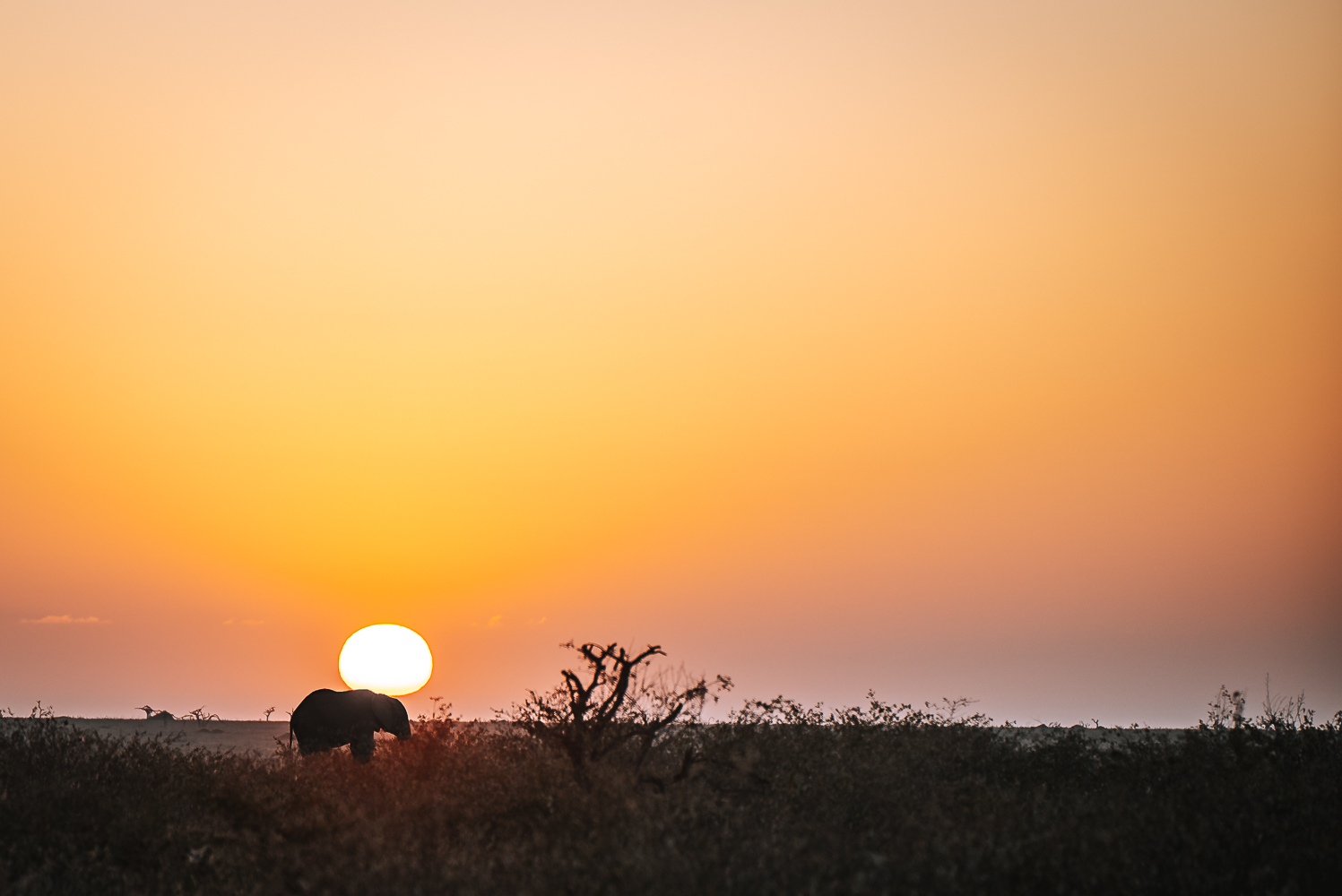
2. African Buffalo
The African Buffalo, also known as the Cape Buffalo, is also plentiful in Kenya. Their population is estimated at around 160,000.
While they are endemic to the grasslands of Mount Kenya and Aberdare National Parks, as well as the floodplains of the Maasai Mara, they can be found in a number of national parks and reserves throughout Kenya, including Maasai Mara, Tsavo East and West, Amboseli, Lake Nakuru National Park, Lake Naivasha and Nairobi National Park. They are also found in several private conservancies and community-run wildlife areas.
The Cape Buffaloes in Kenya have resilient hides used for armour-like protection from threats. They are also among the most social African bovids.
We don’t find buffalos to be that interesting to observe on a safari, but they are actually the most dangerous animals you can come across on a safari. Due to their aggressive nature, they have been nicknamed “Black Death’’. If there is one animal in Kenya to be afraid of during a walking safari, it’s the buffalo!
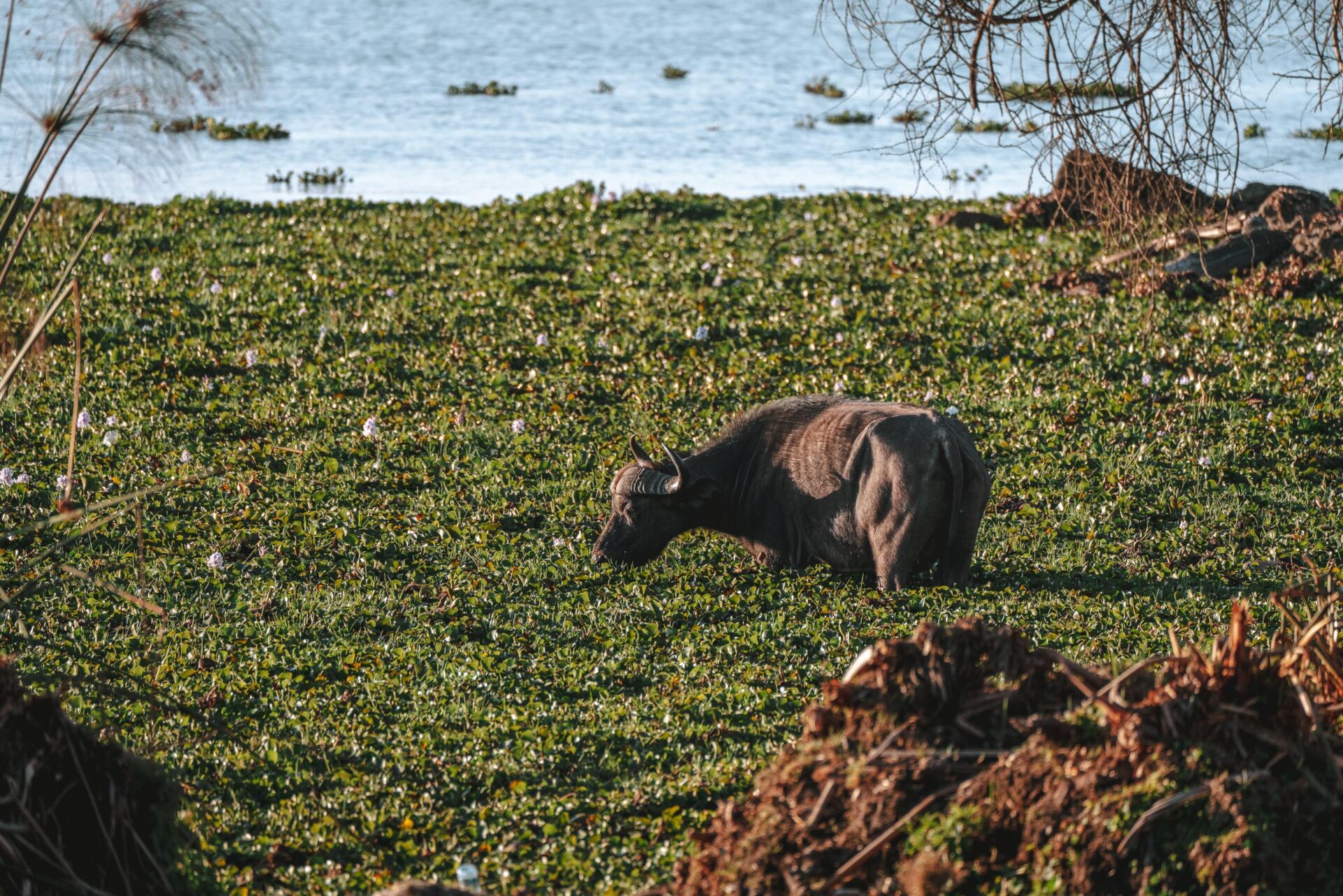
3. Lion
Did you know that the male East African lion is the Kenyan national animal? It was estimated that in 2020, the lion population in Kenya was around 2,000 individuals. Thanks to numerous conservation efforts and initiatives, this figure has been increasing over the past few years. Some reports indicate that the number was as low as 1,500 in the 2000s.
Lions can be found in many of the national parks and game reserves in Kenya, including Maasai Mara, Amboseli, Tsavo, Samburu National Park, Nairobi National Park, and Lake Nakuru National Park.
In our opinion, nothing beats seeing lions in the Maasai Mara, where pride sizes can reach 20+ individuals. With abundant grasslands and plenty of grazing herbivores around, lions in Maasai Mara are never short of food and hunt almost daily. This means that you get a chance to admire them in action, feasting on their kill or even playing with one another. Satisfied lions and fun to watch!
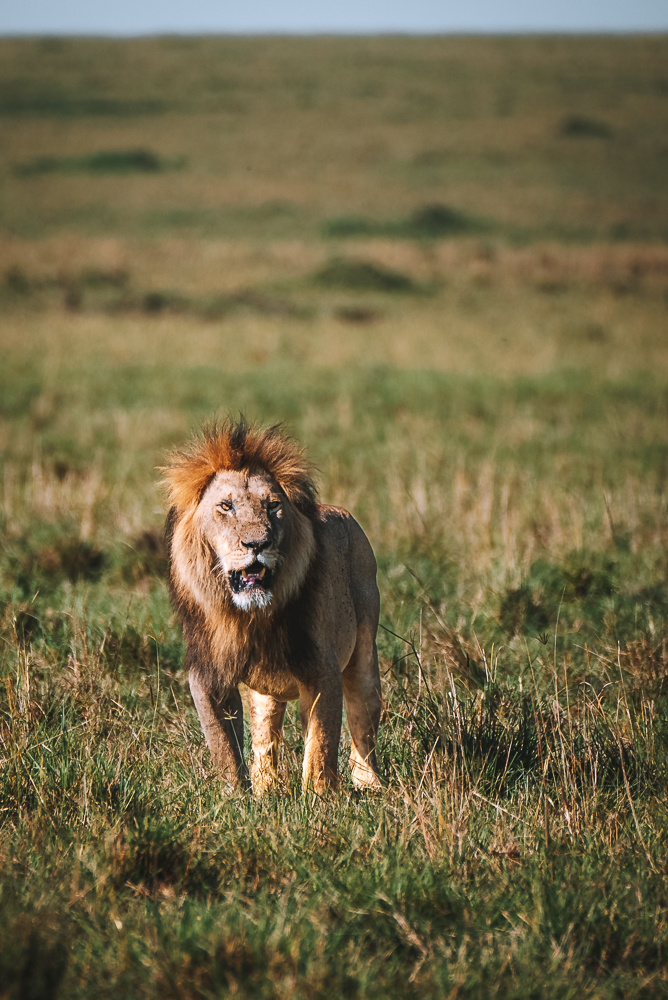
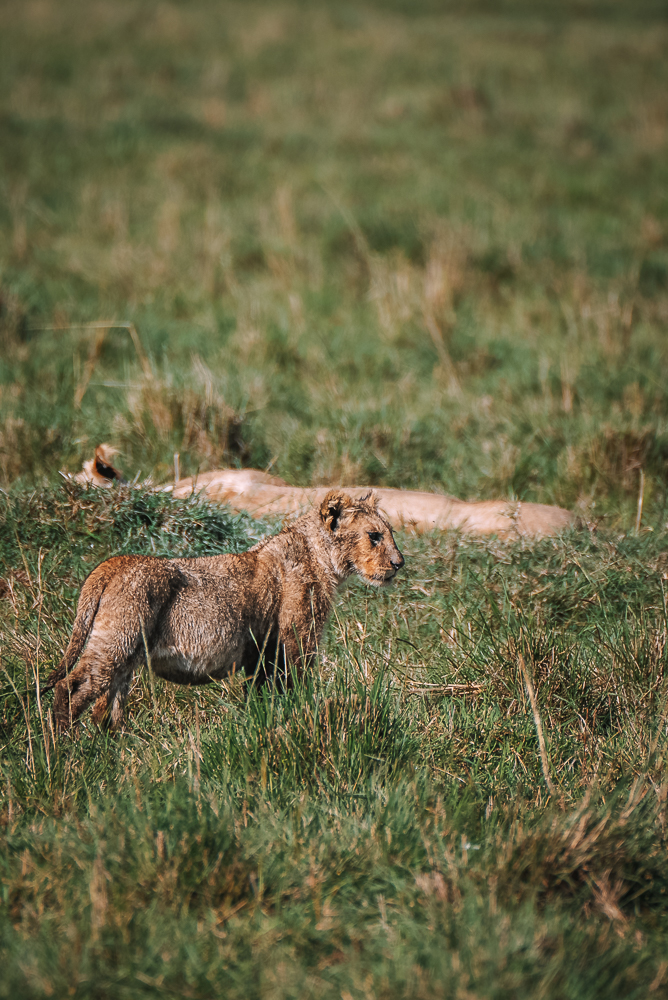
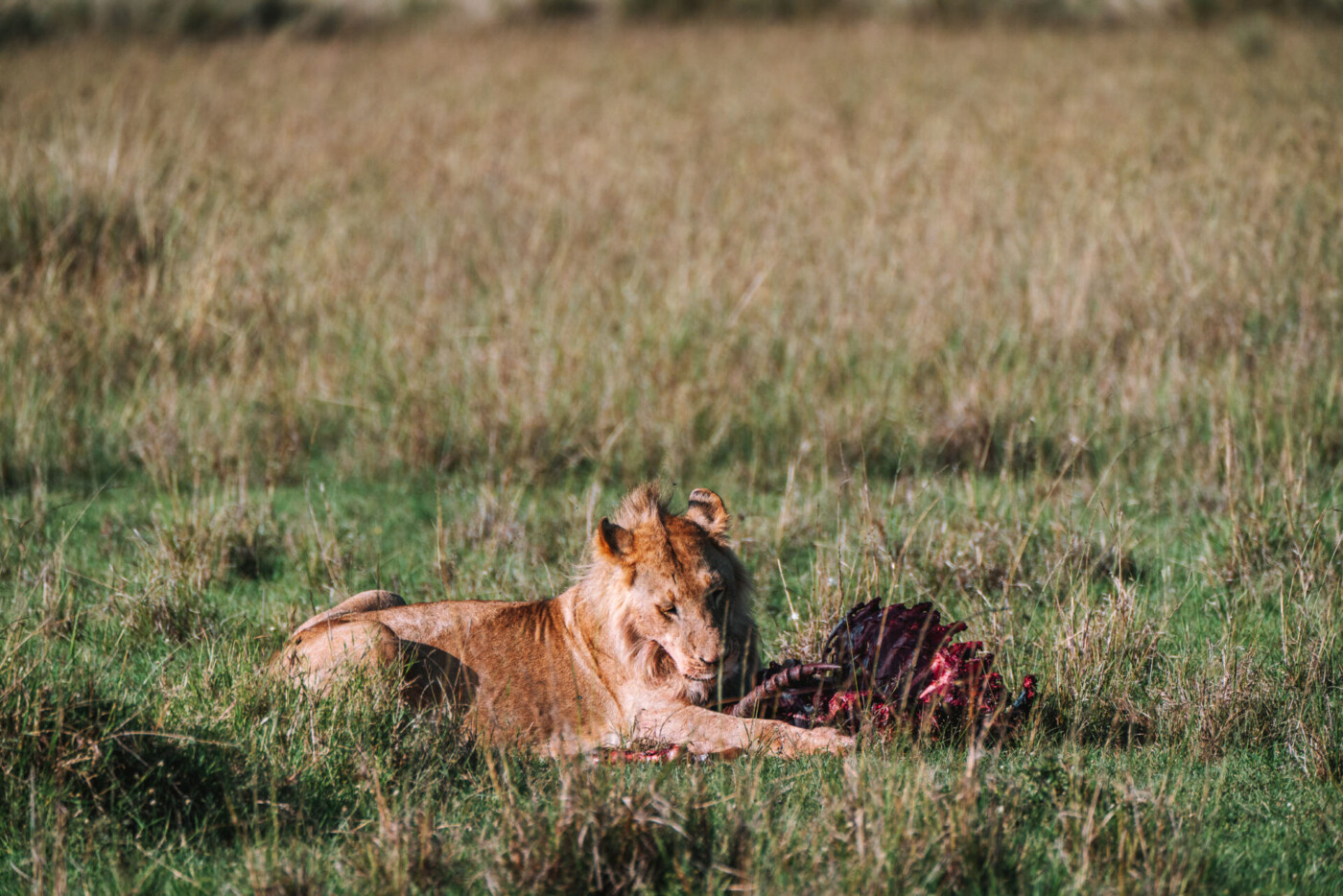

4. Leopard
Leopards are definitely one of the more elusive animals in Kenya. Their population size is harder to estimate, although some suggest that the number of wild leopards in Kenya can be close to 1000.
Leopards can be found in various national parks and reserves in Kenya, including Masai Mara, Amboseli, Samburu, Tsavo, Meru National Park, Laikipia and Nairobi National Park. But even if they are present, spotting them is not easy.
Leopards live in rocky landscapes, dense bush, and spend a lot of their time in trees. Their distinctive rosette-like coat pattern helps them camouflage while they are hunting. We have only seen a leopard once during our time in Kenya and it was in the Masai Mara. The encounter was incredible, as the leopard, Romi, had appeared with a small cub who was still uncomfortable in front of cars and was learning his ways right in front of our eyes.
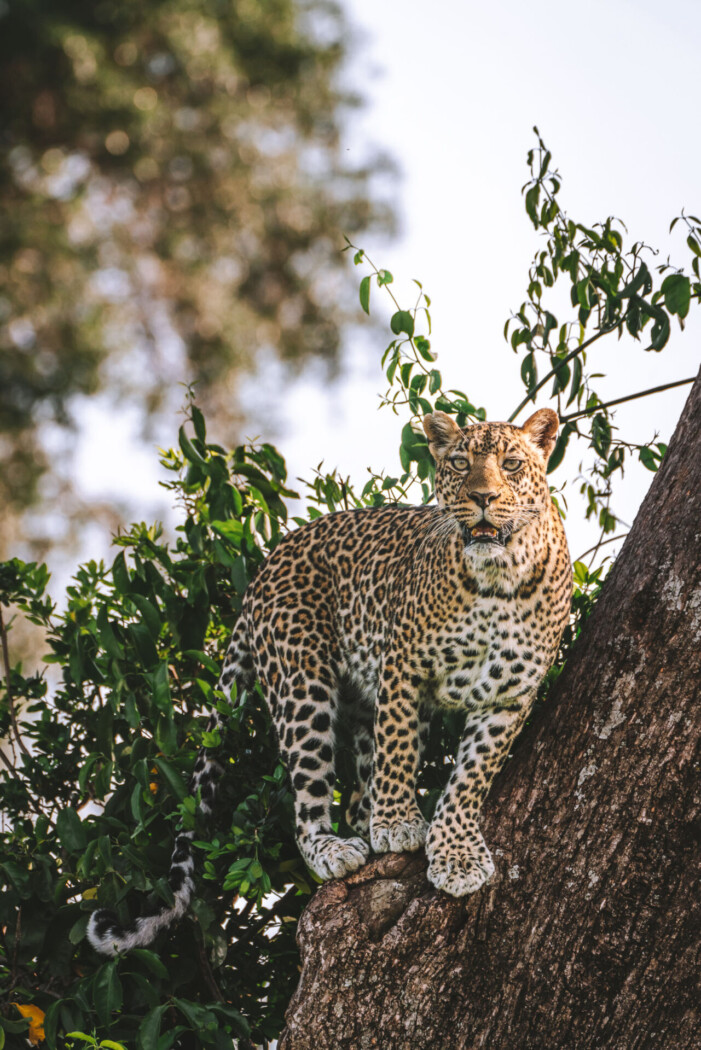
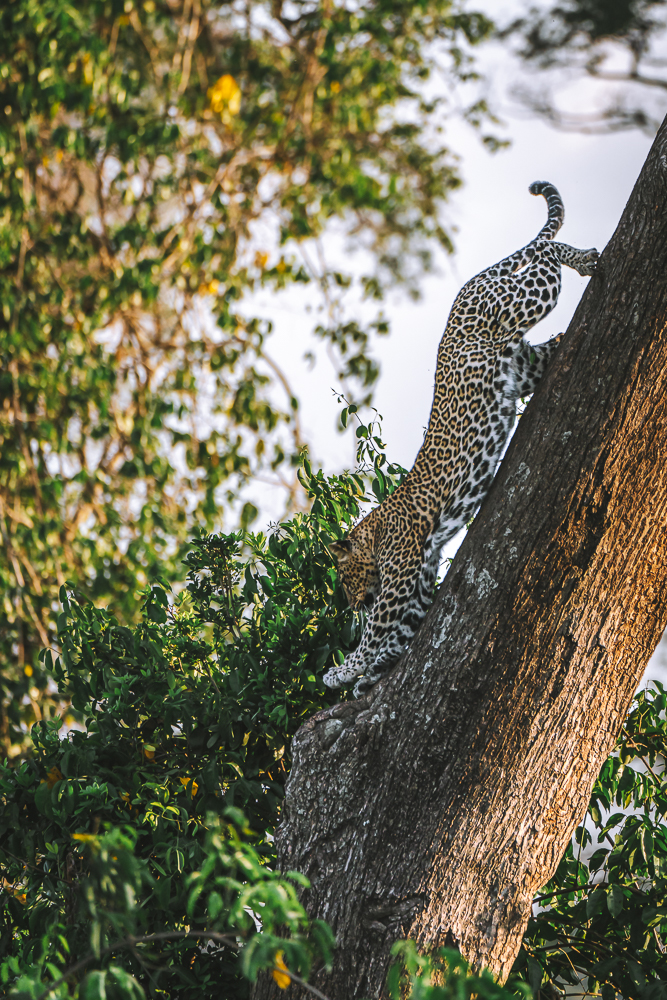
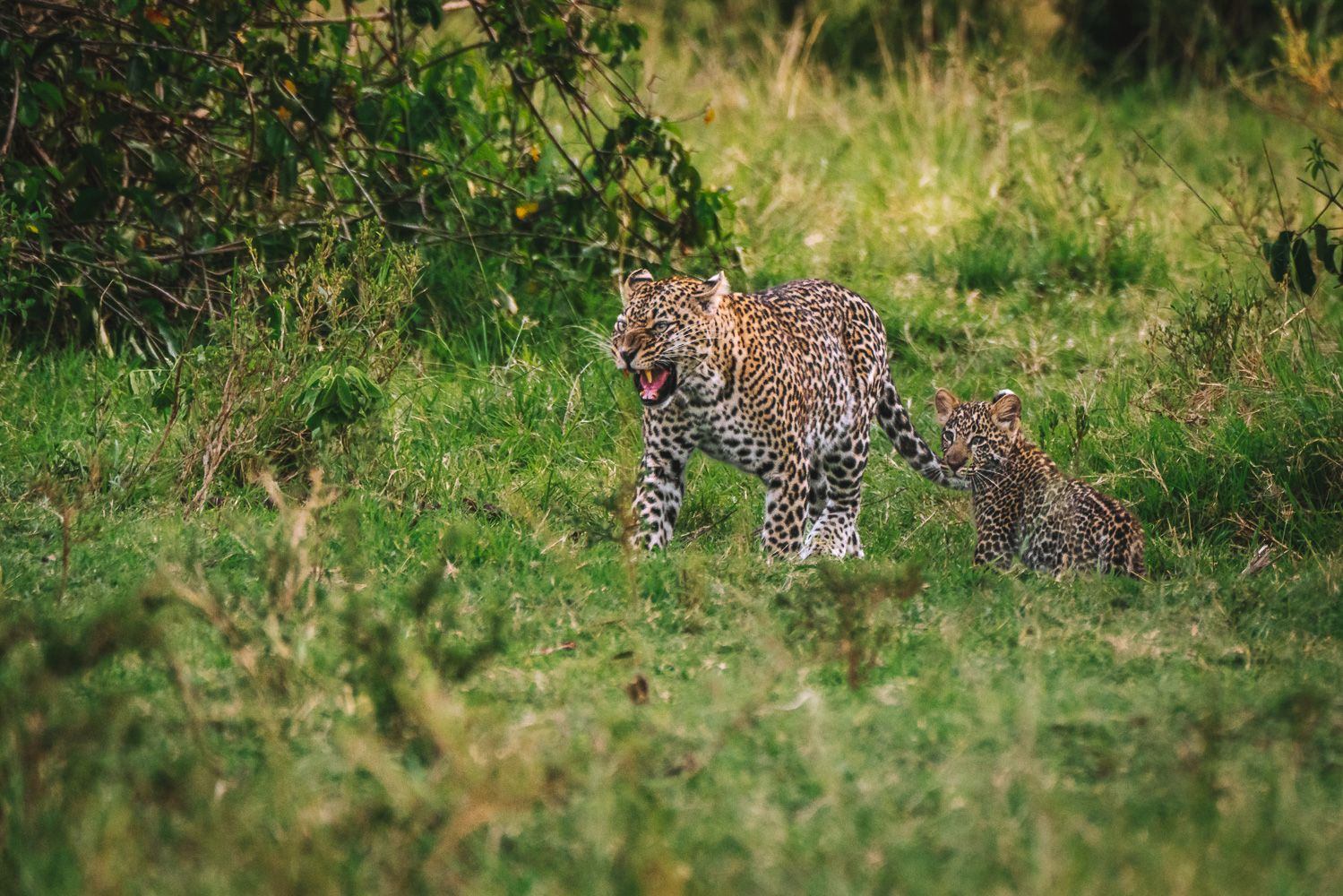
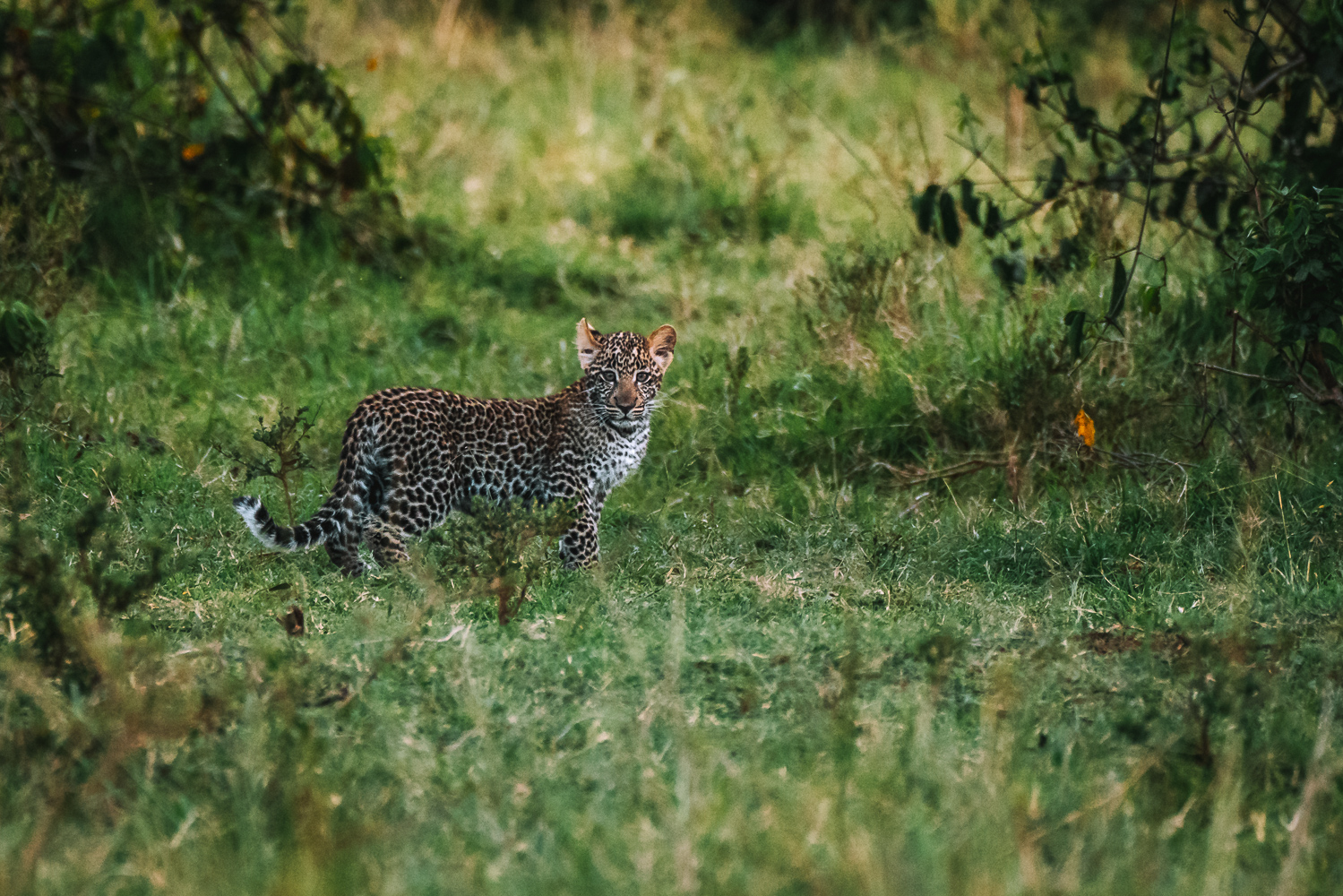
5. Rhinoceros
According to the Kenyan Wildlife Service, Kenya’s rhino population has increased from 1,258 rhinos at the end of 2017 to 1,739 rhinos by mid-2021, a fantastic statistic indicating the success of conservation efforts across the country. There are two species of rhino that make their home in Kenya; the critically endangered black rhino and its far more populous cousin, the white rhino. Black rhinos are a lot rarer in Kenya and harder to spot than white rhinos.
These wild animals roam the plains of the country and can be seen in Maasai Mara National Reserve, Lake Nakuru National Park, Tsavo East National Park, and Tsavo West National Park. The endangered black rhino can also be spotted in Lewa Wildlife Conservancy and Ol Pejeta Conservancy.
Spotting a rhino on safari in Kenya is always a special experience. We found that Kenya is one of the few destinations in Africa where you can admire the rhino’s horns in all of their glory. Thanks to Kenya’s strict anti-poaching efforts (the penalty for rhino poaching in Kenya is life in prison), the conservation authorities do not have to cut their horns, as they do in other African countries. This means that the horns usually grow long and can be easily seen during an interaction. It’s a real treat!
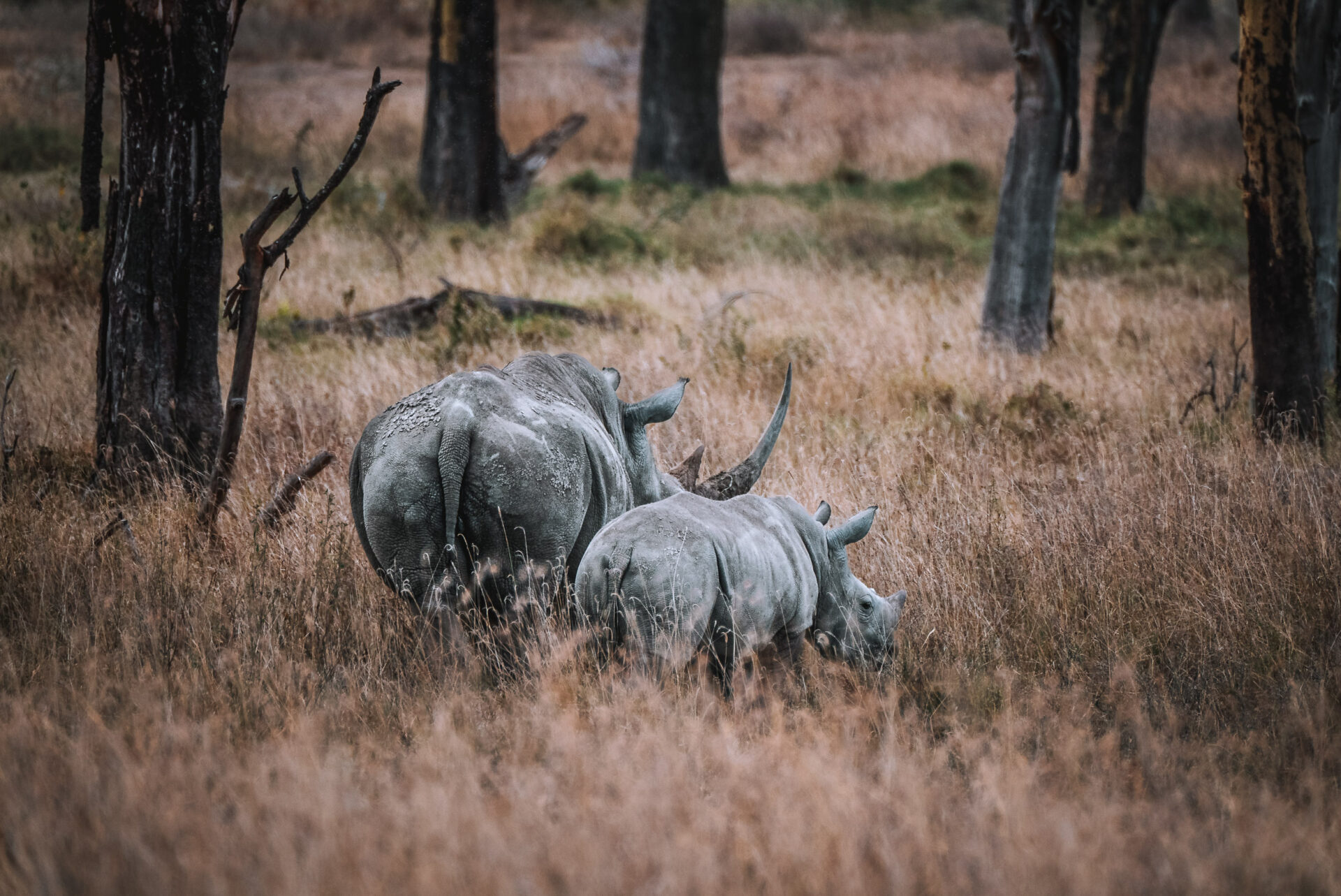
Other Iconic Animals in Kenya
There is an abundance of other wildlife to be seen in Kenya, aside from the Big Five. Giraffes wander the savannah, their tall frames towering above the rest of the scenery, and zebras roam in large herds, occasionally being joined by cheetah families on patrol. The smaller iconic animals like hyenas can also be found hunting for prey or lounging near rivers alongside huge hippos. Let’s cover a few of our other favourite iconic animals in Kenya.
6. African Wild Dog
One of the lesser-known African Big Five, the African wild dog is an endangered species that’s a treat to spot on a safari in East Africa. Unfortunately, it is estimated that there are only a few hundred wild dogs left in Kenya, and the chances of seeing them in the wild are not high.
We have not encountered wild dogs on our Kenya safari, but we heard that populations of these playful animals can be found in Laikipia Plateau and Samburu National Reserve. Some reports indicated that the numbers of African wild dogs in Northern Kenya, particularly in the Samburu-Laikipia region, have increased eightfold over the last decade.
These carnivorous mammals are known for their extraordinary social and cooperative family structure. They travel and hunt together in packs, ranging from two to thirty individuals. African wild dogs have unique mottled white, black, yellow, and brown coats and often sport white tails with black tip. And no two wild dogs are exactly alike – their patterns are unique, just like our fingerprints!
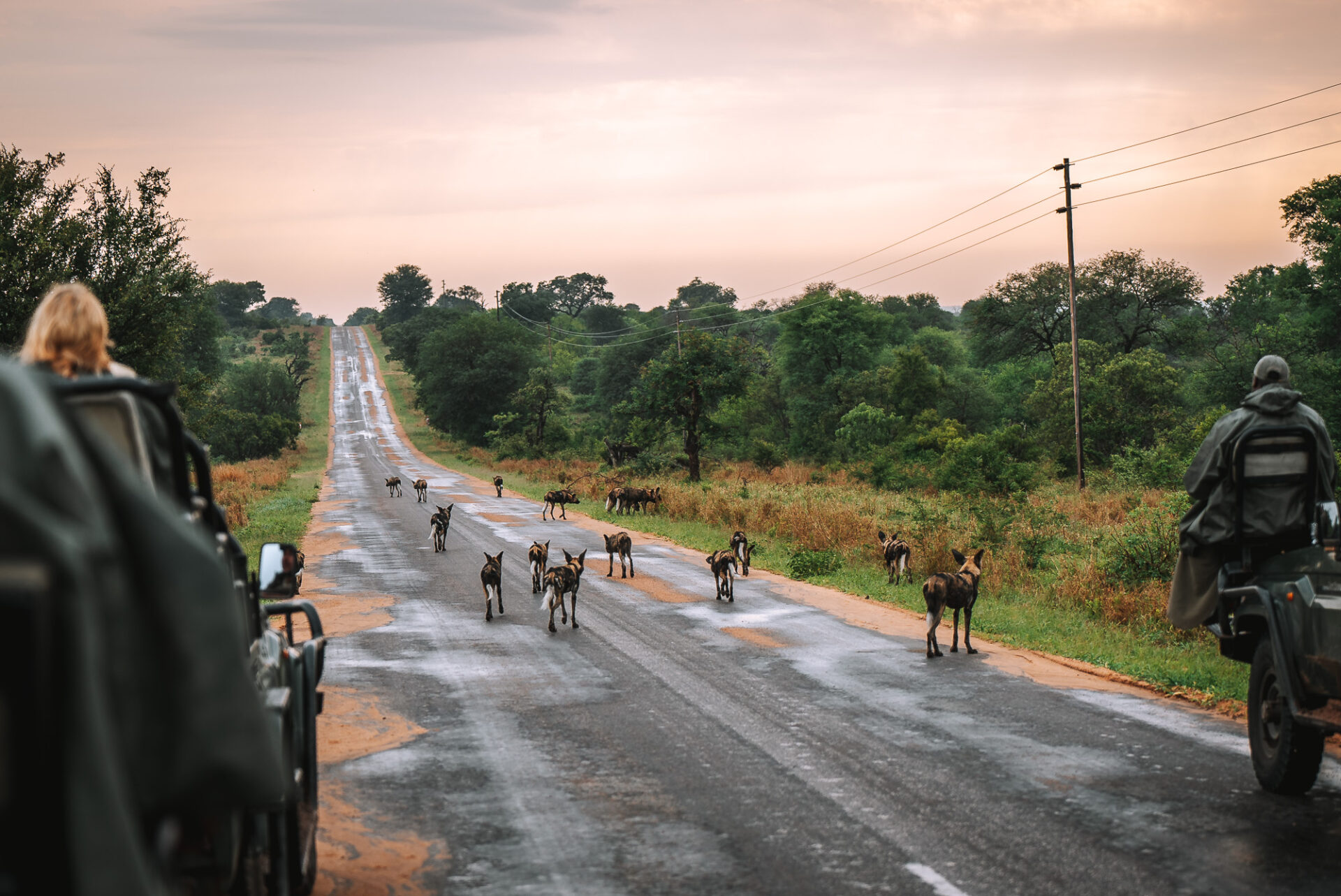
7. Cheetah
Cheetah is known as one of the most iconic animals in Kenya. They are one of our favourite big cats and are always so fun to observe in the wild. It’s hard to get the exact number of cheetahs in Kenya, but some reports seem to estimate no more than 1200 wild cheetahs living in Kenya. The global population of cheetahs is on decline, so conservation work focusing on these majestic cats is ever so important.
Cheetahs in Kenya are scattered in small numbers across all of Kenya’s big National Parks, including Masai Mara, Tsavo Park, Nairobi National Park, Meru National Park, to name just a few.
Cheetahs are most active during daybreak and late afternoon, so they are relatively easy to spot on a safari drive. The speed of these cats is incredible. They can reach up to 75 miles an hour while in pursuit of their prey, a sight we witnessed firsthand during our safari in the Masai Mara when a mom and her three cubs chased down an impala right in front of our eyes.
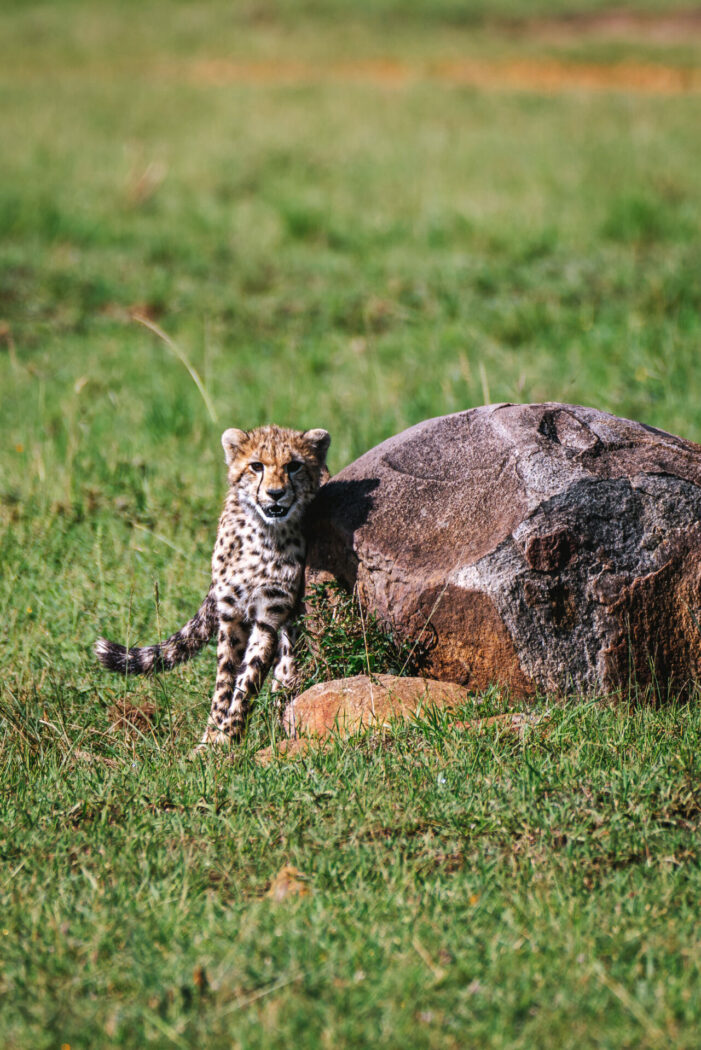
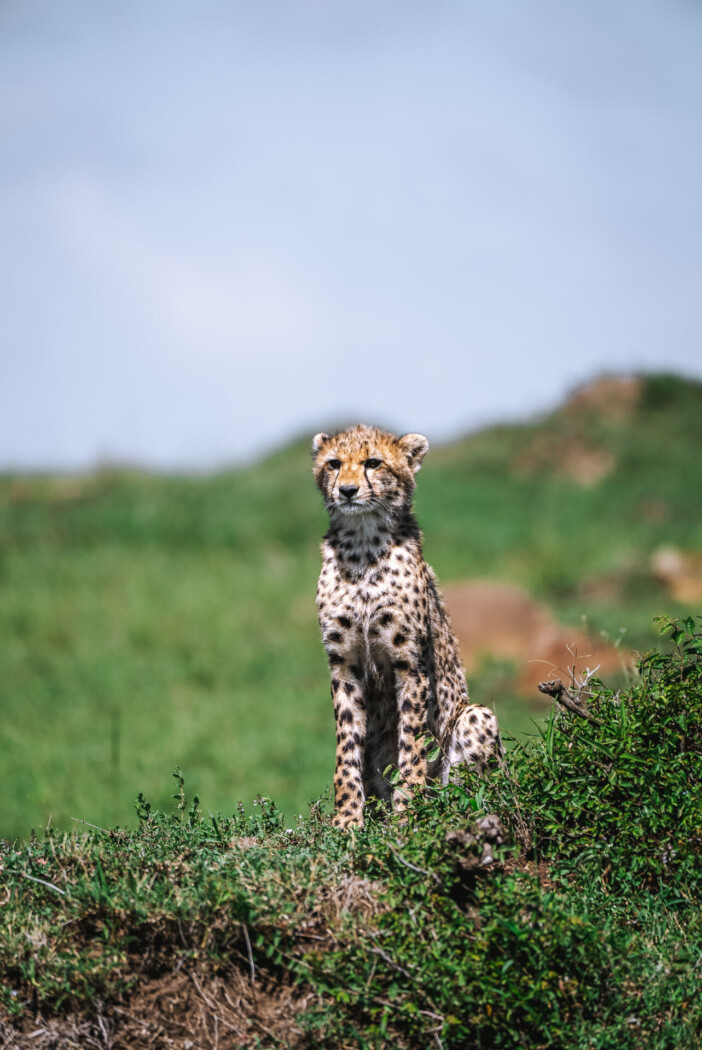

8. Giraffe
Giraffe is the third largest land mammal and is another iconic animal in Kenya that’s a favourite for any safari. Standing tall and proud, giraffe is always a magical encounter in an African savannah.
Kenya has a healthy population of giraffes across many of its reserves and parks. And it’s worth noting that Kenya’s giraffes are actually different from those in Southern Africa. Masai Giraffe in particular, often referred to as the “reticulated giraffe”, can be identified by their unique reticulated pattern, which gives them their signature look.
They are the tallest land mammals, with one individual measuring up to 18 feet high – so tall that it has been known to browse off trees for food that other animals cannot reach! Despite potential danger in their environment, giraffes can live up to 25 years in the wild and have complex social relationships, often forming small family groups and relying on each other for protection.
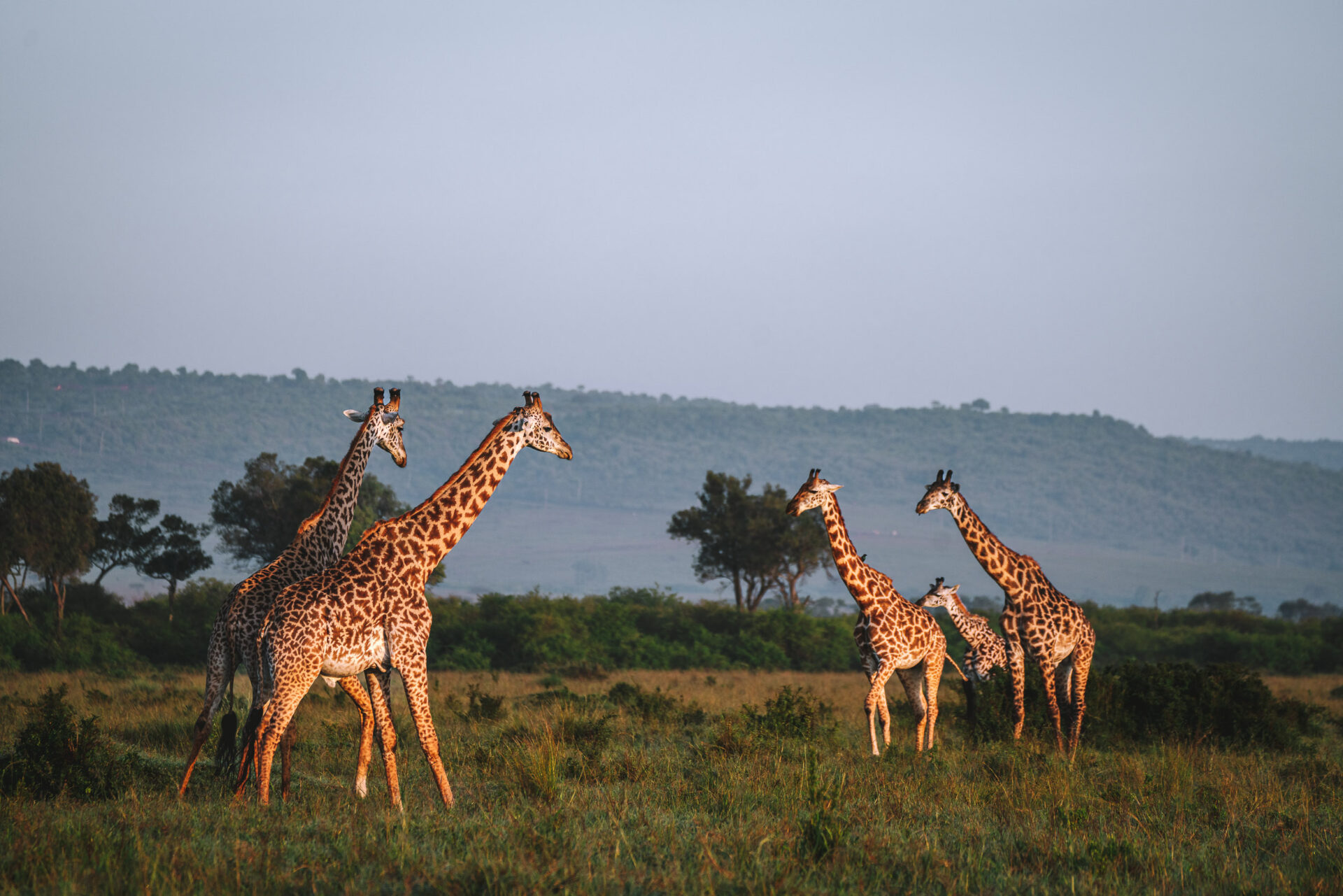


10. Hippo
Hippos are considered to be one of the most dangerous animals in Africa, responsible for more human deaths in Africa than any other large animal. They may look lazy and calm in the water, but in reality, they are aggressive and territorial, ready to strike if they feel threatened.
Hippos are easy to see on a safari in Kenya. They are prevalent in most parks and reserves in Kenya, always found in bodies of water like dams and lakes. If you are able to spot them, make sure you stay for a while to check out the fascinating sight of these large creatures surfacing from the water with their jaws wide open to cool off during hot days.
In the evening and during nightfall, hippos actually come out of the water to eat grass and can be seen in all of their glory on night safaris.
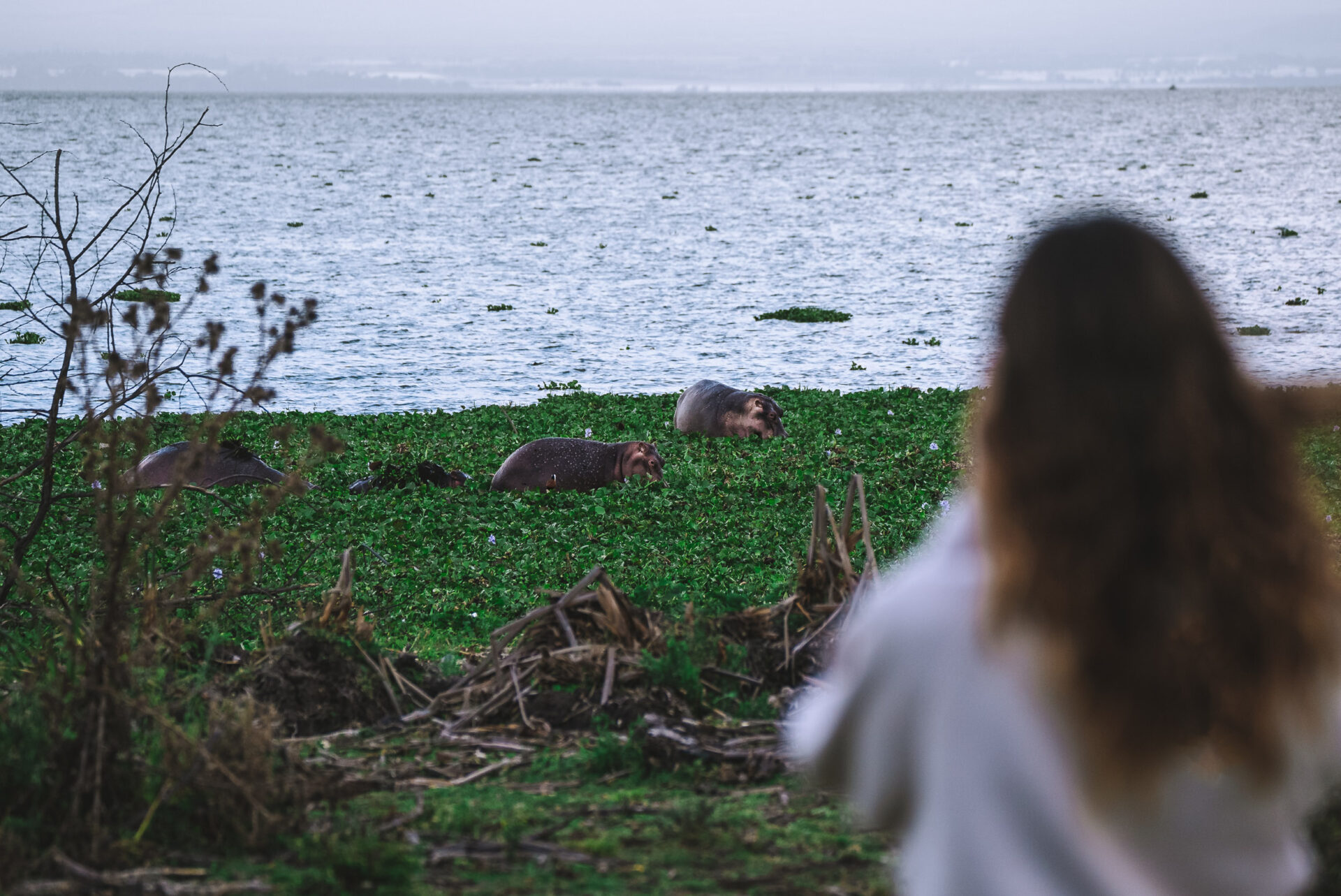
11. Lilac Breasted Roller
While not an animal, the Lilac Breasted Roller is the official national bird of Kenya, and therefore deserves a spot on this list. The bird is very wide spread in Kenya and can be spotted on almost any safari drive.
It is known for its bright and colorful feathers and is more often found in savannah regions and woodlands throughout Kenya. We are not big birders, but we always stop to snap a photo of this colourful beauty.
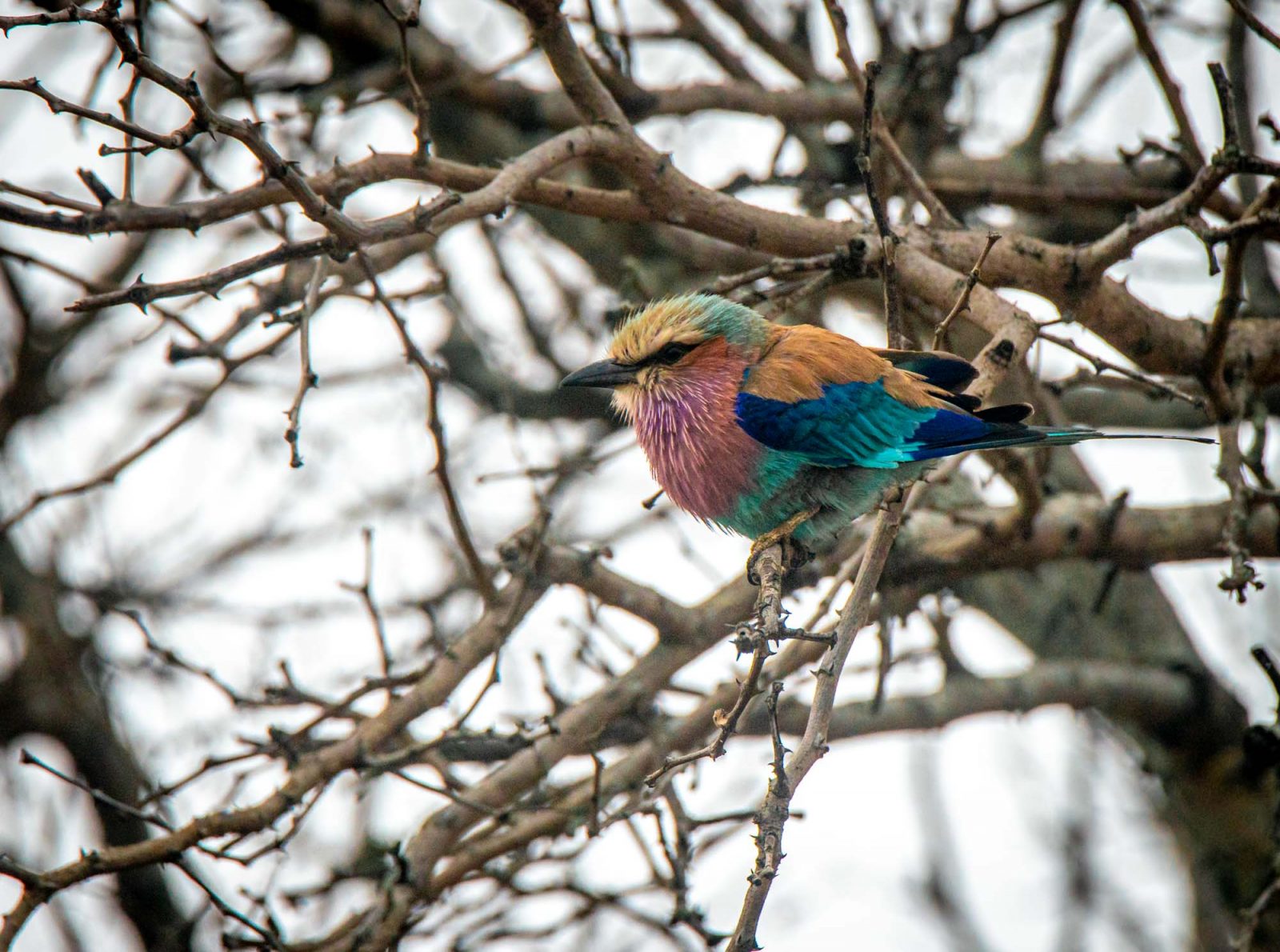
Best National Parks for Safari in Kenya
With over 20 National Parks across the country, Kenya offers an excellent selections of safari destinations to add to your itinerary. The parks range in size and terrain, offering lots of ecosystems and unique wildlife experiences.
Our experience in Kenya was limited to only a few National Parks, so we may be a little biased. But we do think that the Masai Mara National Park takes the cake for being the best national park for safari in Kenya. If you only have time to visit one park – make it the Mara!
Amboseli National Park and Tsavo National Parks are also meant to be excellent, although during our visit, we learned that both parks are facing some issues.
If you are wondering what is the best national park to include in your Kenya safari, we highly recommend that you get in touch with an expert like Alluring Africa. With up to date information on weather and environmental conditions in each park, their experts are perfectly set up to help you plan your ideal safari trip.

Tips for Responsible Wildlife Watching in Kenya
No matter who you end up using for your safari in Kenya, we hope you will remember a few easy principles for responsible wildlife viewing.
- Firstly, respect the animals’ natural habitats by maintaining minimal noise levels and keeping conversations quiet while on a safari.
- Secondly, avoid driving off-road or climbing onto high ground which may interfere with the migration of animals in natural conservation areas.
- Finally, keep your distance from wildlife. Give them space to continue their day to day life and observe from a safe distance. Bring a zoom lens and a pair of binoculars to catch all the action and appreciate their beauty from afar.
There are many more animals in Kenya that you may spot on a safari. Go out early, take the opportunity to go on night safaris and don’t forget to be patient! Have fun and take in all of the amazing sights. With all these diverse wonders of the natural world, which of these animals are you most excited to see?
Disclaimer: Our safari in Kenya was hosted courtesy of Alluring Africa and Governor’s Camps, but, as always, all opinions expressed in this article are our own


